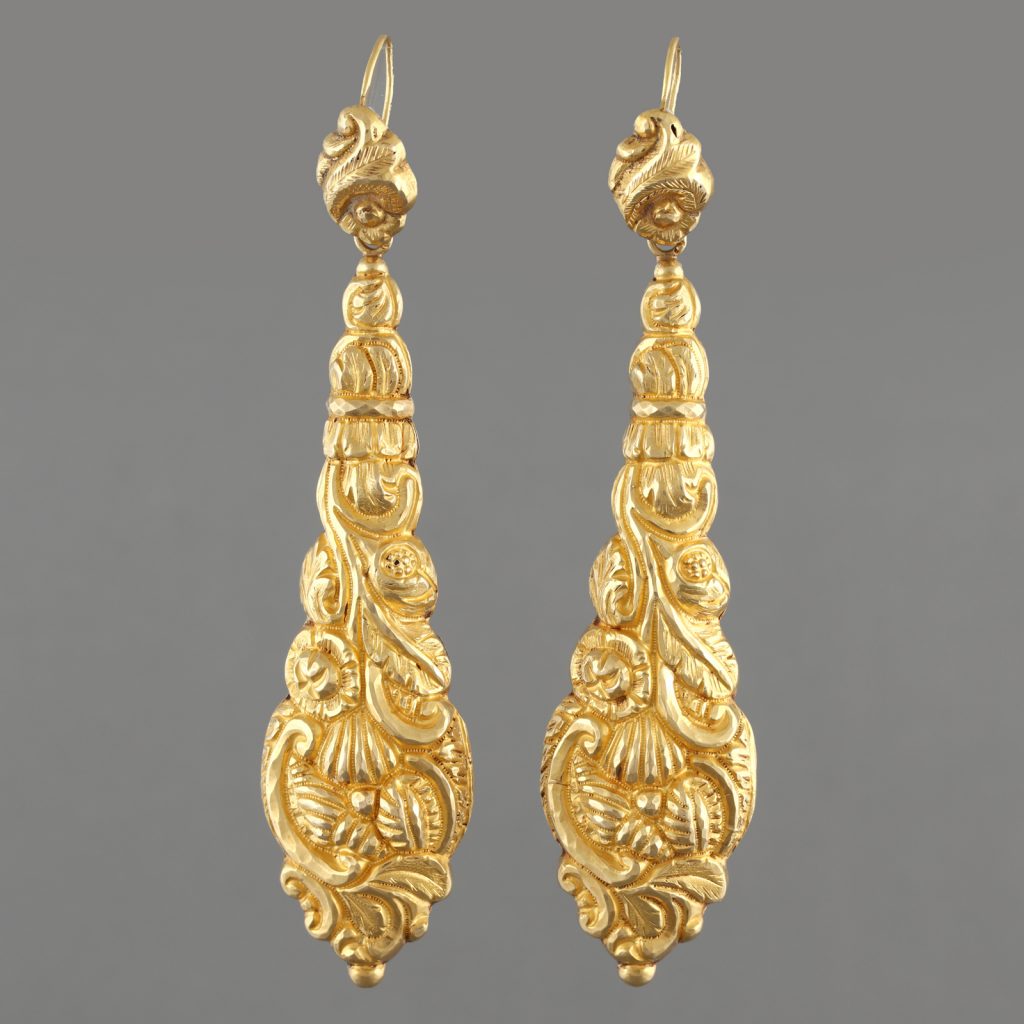Revivalism or Neo-Baroque
Portuguese jewellery is closely linked to the history of the territory and the country. The manufacture of gold in Portugal dates back to the third millennium BC, at a time when reserves of this ore were abundant in the Tagus river basin.
Although there are references in Portugal to work in jewellery (regarding goldsmiths) in the 11th and 12th centuries, these are scarce and the knowledge of pieces produced is rare. The application of filigree decorations and the mastery of drawing, welding and chisel techniques are essential in the works produced at the time.
One of the main global powers during the Age of Discovery, the advanced trade carried out at the time allowed Portugal access to the world’s prolific gemstone mines, alongside a gold rush that strongly impacted the shape and quantity of jewllery produced.
When Portugal was being rebuilt, after the Great Lisbon Earthquake of 1755, the monarchy understood that jewllery was an integral part of its economic success. The inclusion in the design of Baixa Pombalina of additional streets that were exclusively attributed to goldsmiths and jewelers in the modern layout of the capital, allowed them to work and manufacture their pieces, giving rise to a sophisticated and competitive market.
Discover the Portuguese 19th century piece, Revivalism or Neo-Baroque decorated with flowers, foliage and scrolls in the J. Baptista collection.



